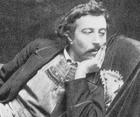
Eugène Henri Paul Gauguin (Paris, June 7, 1848-Atuona, Marquesas Islands, May 8, 1903) was a recognized post-impressionist painter after his death. The experimental use of color and its synthetist style were key elements for its distinction with respect to impressionism. His work was a great influence for the French avant-garde and many other modern artists such as Pablo Picasso and Henri Matisse. Gauguin's art became popular after his death, partly due to the efforts of art dealer Ambroise Vollard, who organized exhibitions of his work almost at the end of his career and posthumously in Paris. possession of the Russian collector Sergei Shchukin as well as in other important collections. Gauguin was an important figure of symbolism, participating as a painter, writer and sculptor of engravings and ceramics. His bold experimentation with color was what laid the foundations for the modernist style of synthetism, while his expression of the inherent meaning of the themes in his paintings, under the influence of Cloisonism, was what paved the way for the arrival of primitivism and the return to the pastoral style (capture of nature, landscapes). His work was also a great influence for the use of techniques such as wood engraving and woodcut in the realization of works of art.4 5 His work helped the evolution of painting, referring to German expressionism and fovismo ( movement that takes place between 1898 and 1908). He was Head of ranks of the School of Pont-Aven and inspirers of the Nabis. He developed the most distinctive part of his production in the Caribbean (Martinique) and in Oceania (French Polynesia), turning mostly in landscapes and nudes very bold for his time for its rusticity and resounding colors, opposed to the bourgeois and predominant aestheticist painting in his time in the western culture. His work is considered among the most important French painters of the nineteenth century, contributing decisively to modern art of the twentieth century.




